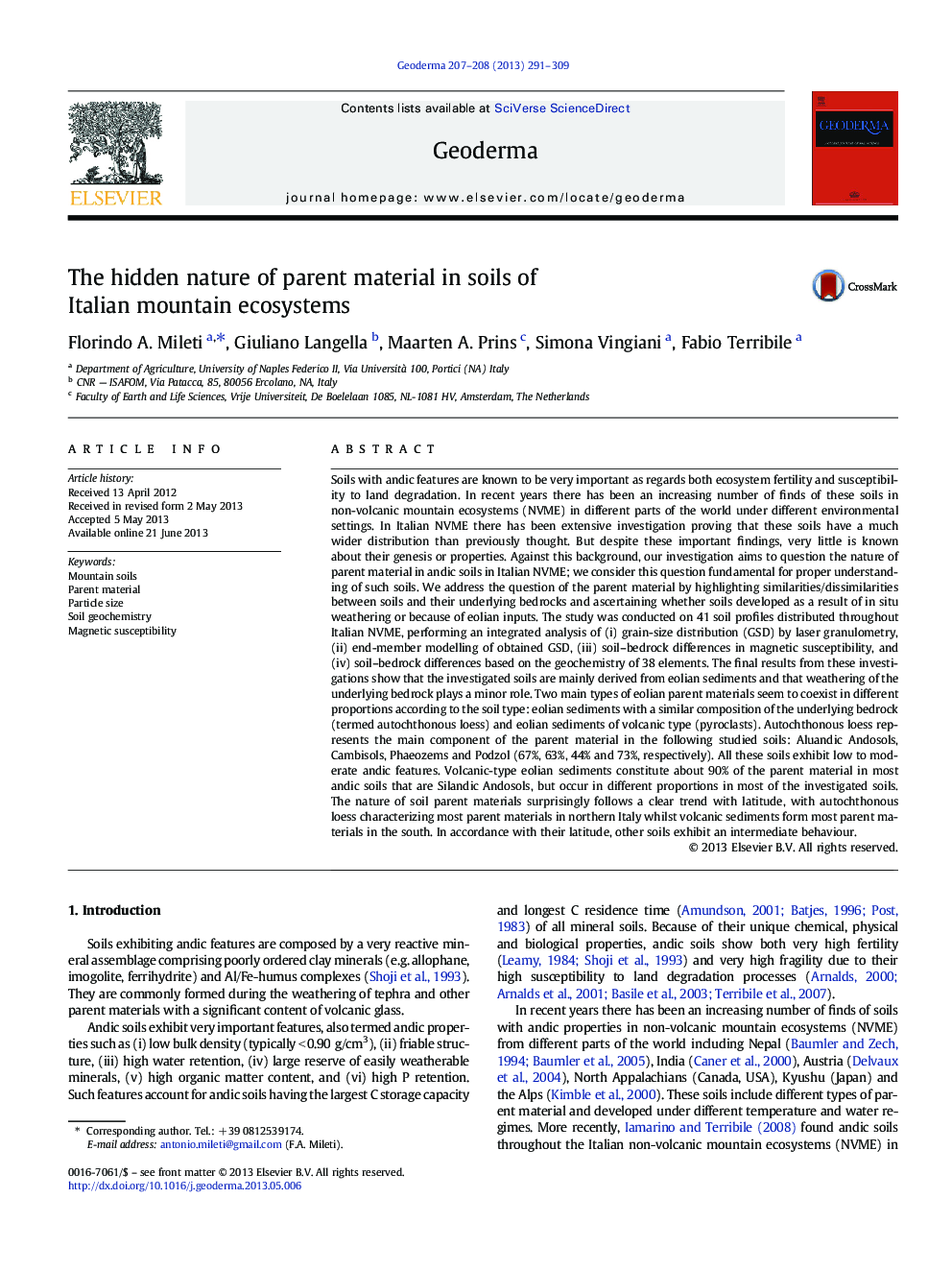| کد مقاله | کد نشریه | سال انتشار | مقاله انگلیسی | نسخه تمام متن |
|---|---|---|---|---|
| 6409181 | 1629482 | 2013 | 19 صفحه PDF | دانلود رایگان |
- New tools are available to address the nature of parent material in soils.
- The most important parent material in Italian Mountain soils is eolian dust.
- These eolian deposits consist of autochthonous loess and volcanic sediments.
- Autochthonous loess is the dominant parent material for all soils.
- Volcanic deposits are the dominant parent material in Silandic Andosol.
Soils with andic features are known to be very important as regards both ecosystem fertility and susceptibility to land degradation. In recent years there has been an increasing number of finds of these soils in non-volcanic mountain ecosystems (NVME) in different parts of the world under different environmental settings. In Italian NVME there has been extensive investigation proving that these soils have a much wider distribution than previously thought. But despite these important findings, very little is known about their genesis or properties. Against this background, our investigation aims to question the nature of parent material in andic soils in Italian NVME; we consider this question fundamental for proper understanding of such soils. We address the question of the parent material by highlighting similarities/dissimilarities between soils and their underlying bedrocks and ascertaining whether soils developed as a result of in situ weathering or because of eolian inputs. The study was conducted on 41 soil profiles distributed throughout Italian NVME, performing an integrated analysis of (i) grain-size distribution (GSD) by laser granulometry, (ii) end-member modelling of obtained GSD, (iii) soil-bedrock differences in magnetic susceptibility, and (iv) soil-bedrock differences based on the geochemistry of 38 elements. The final results from these investigations show that the investigated soils are mainly derived from eolian sediments and that weathering of the underlying bedrock plays a minor role. Two main types of eolian parent materials seem to coexist in different proportions according to the soil type: eolian sediments with a similar composition of the underlying bedrock (termed autochthonous loess) and eolian sediments of volcanic type (pyroclasts). Autochthonous loess represents the main component of the parent material in the following studied soils: Aluandic Andosols, Cambisols, Phaeozems and Podzol (67%, 63%, 44% and 73%, respectively). All these soils exhibit low to moderate andic features. Volcanic-type eolian sediments constitute about 90% of the parent material in most andic soils that are Silandic Andosols, but occur in different proportions in most of the investigated soils. The nature of soil parent materials surprisingly follows a clear trend with latitude, with autochthonous loess characterizing most parent materials in northern Italy whilst volcanic sediments form most parent materials in the south. In accordance with their latitude, other soils exhibit an intermediate behaviour.
Journal: Geoderma - Volumes 207â208, October 2013, Pages 291-309
